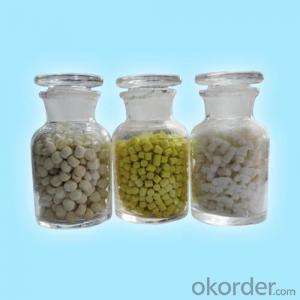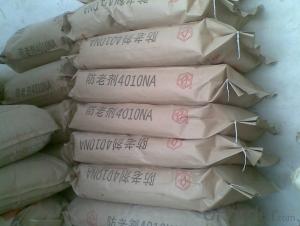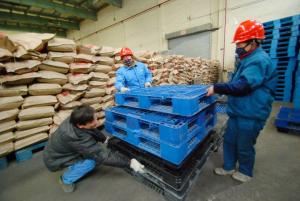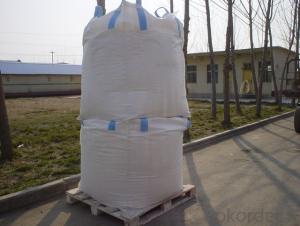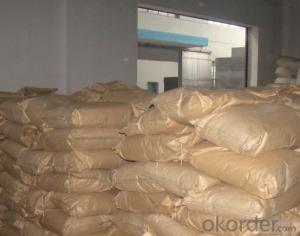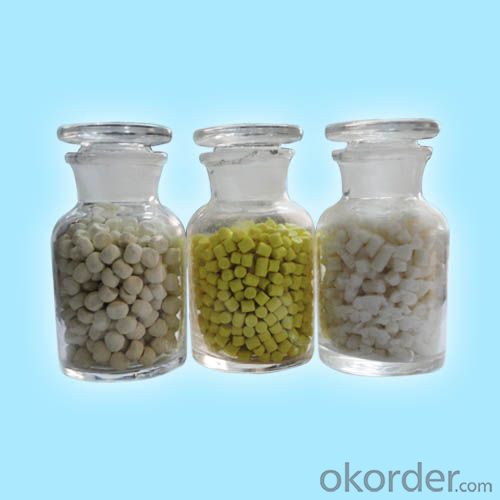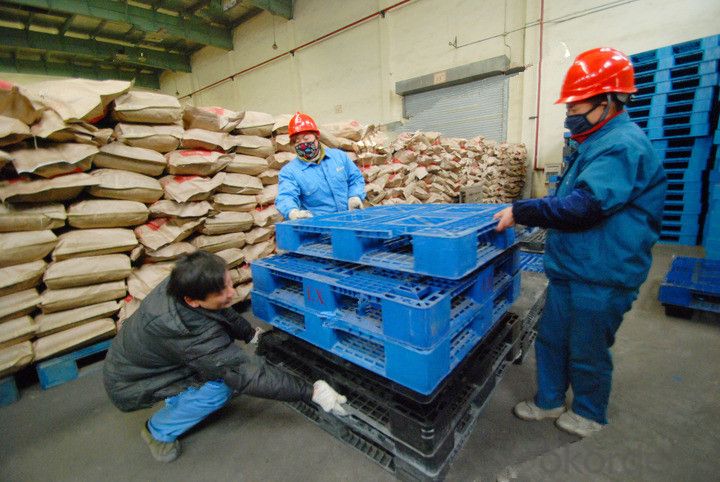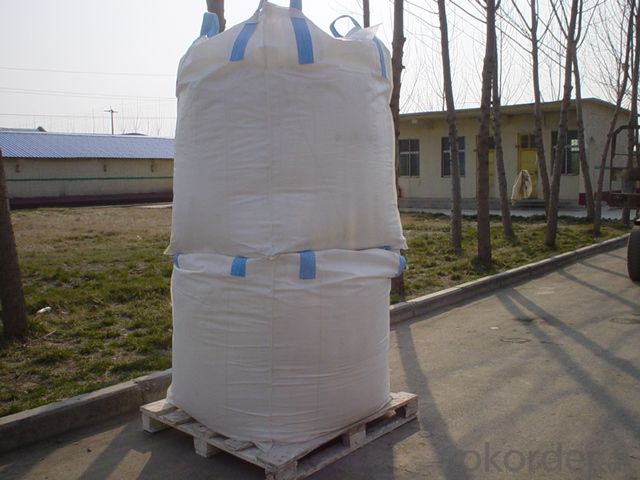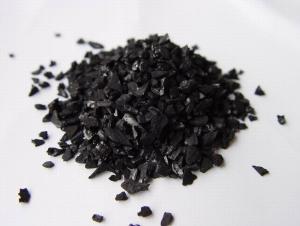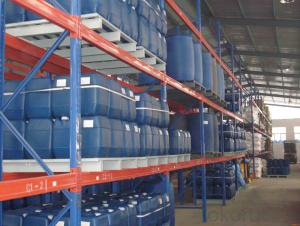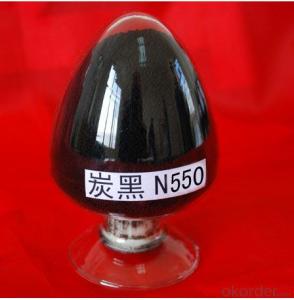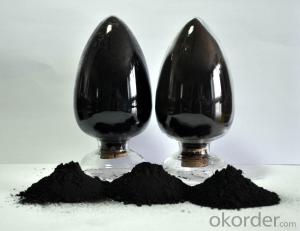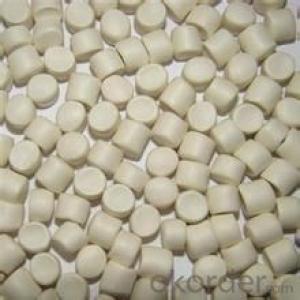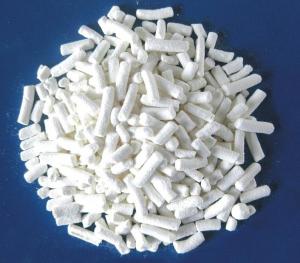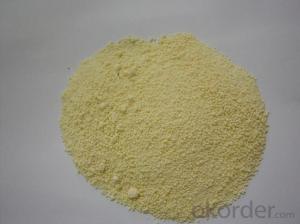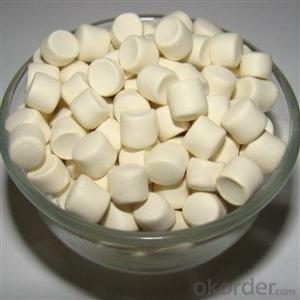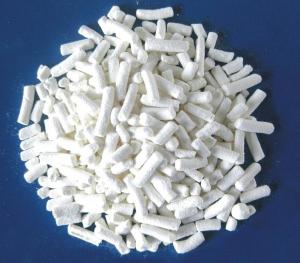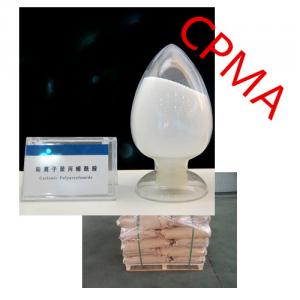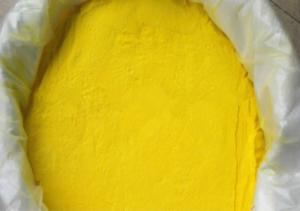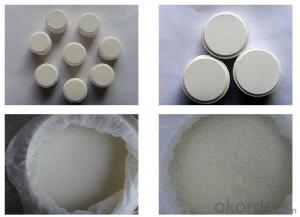RUBBER VULCANIZING ACCELERATOR TMTD (TT)
- Loading Port:
- Tianjin
- Payment Terms:
- TT OR LC
- Min Order Qty:
- 25 m.t.
- Supply Capability:
- 12000 m.t./month
OKorder Service Pledge
OKorder Financial Service
You Might Also Like
RUBBER VULCANIZING ACCELERATOR TMTD(TT)
Chemical Name : Tetramethyl thiuram disulfide
Molecular Formula: C6H12N2S4
Molecular Weight: 240.43
CAS NO. : 137-26-8
Executive standard:HG/T 2334-2007
Specification:
| Index | |
First-class products | Acceptable end-product | |
Appearance |
| |
Initial M.P, oC ≥ | 142.0 | 140.0 |
Loss on drying, % ≤ | 0.30 | 0.30 |
Ash, % ≤ | 0.30 | 0.30 |
Residues on 150μm sieve, % ≤ | 0.00 | 0.10 |
Properties: White, light gray powder or granular. The density is 1.29. Soluble in benzene, acetone, chloroform, CS2 partly soluble in alcohol, diethyl ether, CCI4 insoluble in water, gasoline and alkali with lower concentration. Meeting hot water becomes to dimethylamine ammonium and CS2. Be sensitive to skin and pneogaster
Application: Can be used as a single accelerator, as a secondary accelerator or as a sulphur donor in most sulphur-cured elastomers. Scorchy and gives fast cure rates. Produces an excellent vulcanisation plateau with good heat aging and compression set resistance in sulphurless and EV cure systems Good color retention is obtained in non-black vulcanisation. A valuable secondary accelerator for EPDM. May be used as a retarder in the vulcanisation of polychloroprene rubber with ETU and also be used as bactericide and pesticide
Packaging: 25kg plastic woven bag, paper with plastic film bag, kraft paper bag.
Storage: The product should be stored in the dry and cooling place with good ventilation, avoiding exposure of the packaged product to direct sunlight. The validity is 2 years.
Note: The product could be ultrafine powder based on customer accurate requirement.
- Q: What are the pharmaceutical manufacturing companies now using PT / AL_203 catalysts?
- Yueyang Eagle Hill Petrochemical Plant
- Q: Biological enzymes and chemical catalysts of the differences in the source, nature and catalytic characteristics of the different, specific point
- Biological enzyme catalytic reaction conditions are mild, high selectivity, can not be infected
- Q: Can a catalyst decrease the rate of a chemical reaction? Please give an example if yes.
- no, by defintion the catalyst speeds up the reaction.
- Q: What is the chemical nature of the enzyme?
- Enzyme protein and cofactor are present in the absence of catalytic activity, only these two parts together to form a complex to show the catalytic activity of this complex called the whole enzyme. Some enzymes cofactor is the metal ion, some enzyme cofactor is Organic small molecules in these organic small molecules, where the enzyme and protein binding is called the auxiliary base; and with the enzyme protein binding was more relaxed, dialysis can be used to separate the enzyme protein is called coenzyme. There is no strict boundary between the base and the coenzyme, the role of the metal ion in the enzyme molecule, or as a component of the active site of the enzyme, or the conformation necessary to form the center of the enzyme, or between the enzyme and the substrate The same coenzyme is often able to bind to a variety of different enzyme proteins, the composition of a variety of catalytic functions of different enzymes, such as coenzyme Ⅰ (NAD +) can be a variety of enzymes, As a coenzyme for many dehydrogenases, but each enzyme protein can only bind to a specific coenzyme into a whole enzyme.It can be seen that the specificity of the enzyme is the enzyme protein part of the coenzyme in the enzymatic reaction is usually responsible for electrons, atoms Or some chemical groups to determine the nature of the reaction.In recent years, it has been found that, in addition to proteins, some RNA and DNA molecules also have a catalytic effect on the chemical nature of the enzyme is the concept of protein produced a strong impact . However, the now known enzymes are essentially protein-based, or protein-dominated core components, and the concept that the enzyme is a protein-based biocatalyst does not exclude the presence of other types of catalysts, and more precisely, Can be given to the enzyme under the definition of: the enzyme is a kind of biological activity and special space conformation of biological macromolecules, including protein and nucleic acid.
- Q: what is a catalyst ?
- anything that speeds up a reaction, chemical or otherwise, between two things
- Q: What are the requirements for the catalyst for the chemical industry?
- Generally find a few, according to the cost and cost of cost, choose cost-effective
- Q: What is the difference between an enzyme catalyst in a living body and a catalyst in chemistry?
- in vivo enzyme activity is regulated in the body, the enzyme activity is regulated control. This is another important feature of the enzyme that distinguishes it from the chemical catalyst. There are many ways to regulate enzyme activity, such as feedback regulation, covalent modification, zymogen activation, allosteric regulation, hormone regulation, and so on.
- Q: Does the nature and quality of the catalyst itself change before and after the chemical reaction?
- No, but in some cases it may produce catalyst poisoning
- Q: how a catalyst can provide a new route in forming the product?
- catalyst speeds up the reaction... i don't know if there is actually 'a new route' in product formation because catalysts should not affect the reaction... it only has to speed up the reaction
- Q: What are the catalysts?
- The catalyst is a substance that can change the rate of the reaction without changing the standard of the reaction Gibbs free, according to the definition of the International Pure and Applied Chemistry (IUPAC) in 1981, Enthalpy change. This action is called catalysis. The reaction involving the catalyst is a catalytic reaction. The catalyst will induce a chemical reaction to change, causing the chemical reaction to become faster or slower or to undergo a chemical reaction at a lower temperature The catalyst is also known as a catalyst in industry, and the composition, chemical properties and quality of the catalyst itself do not change before and after the reaction;
Send your message to us
RUBBER VULCANIZING ACCELERATOR TMTD (TT)
- Loading Port:
- Tianjin
- Payment Terms:
- TT OR LC
- Min Order Qty:
- 25 m.t.
- Supply Capability:
- 12000 m.t./month
OKorder Service Pledge
OKorder Financial Service
Similar products
Hot products
Hot Searches
